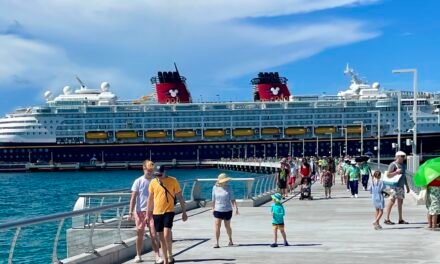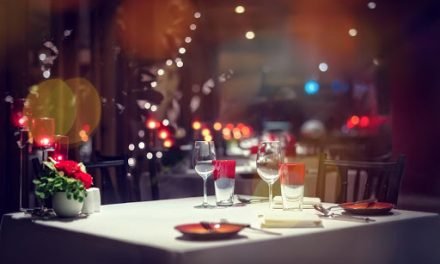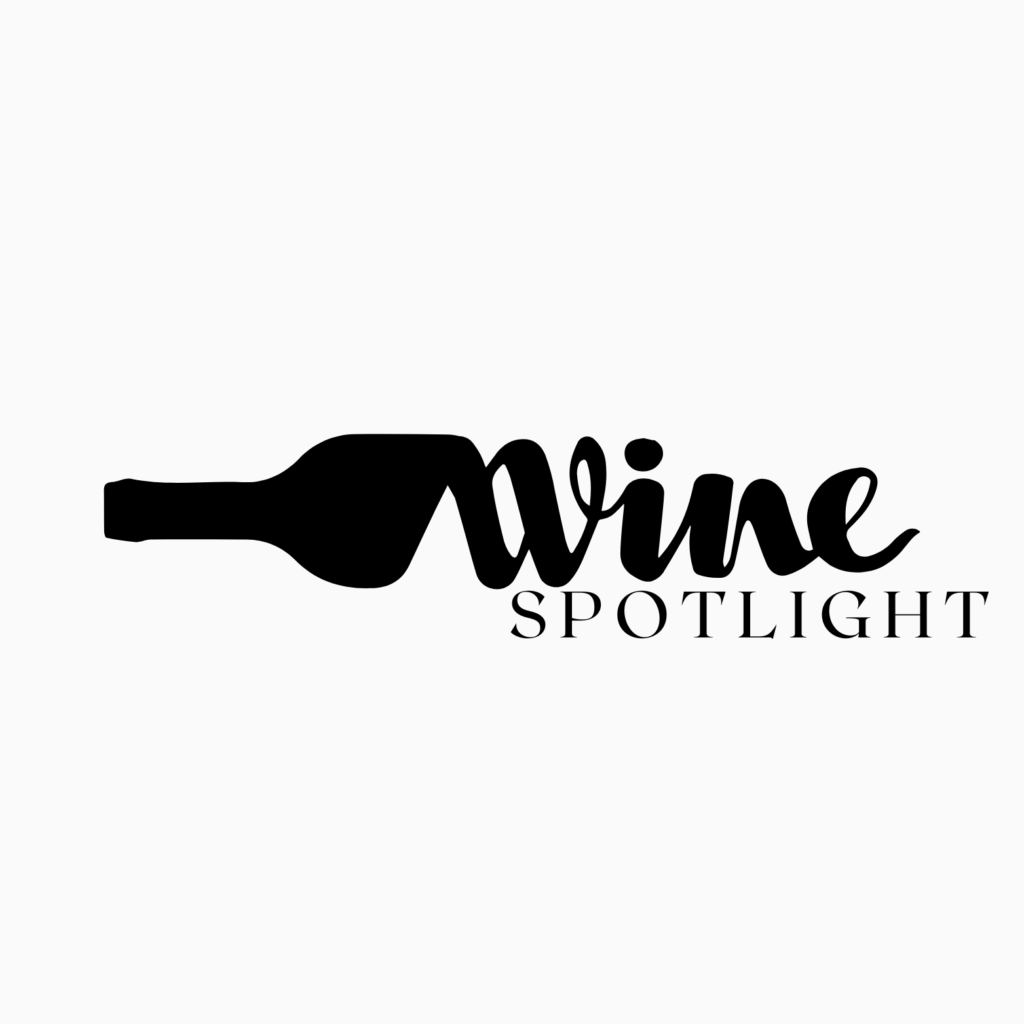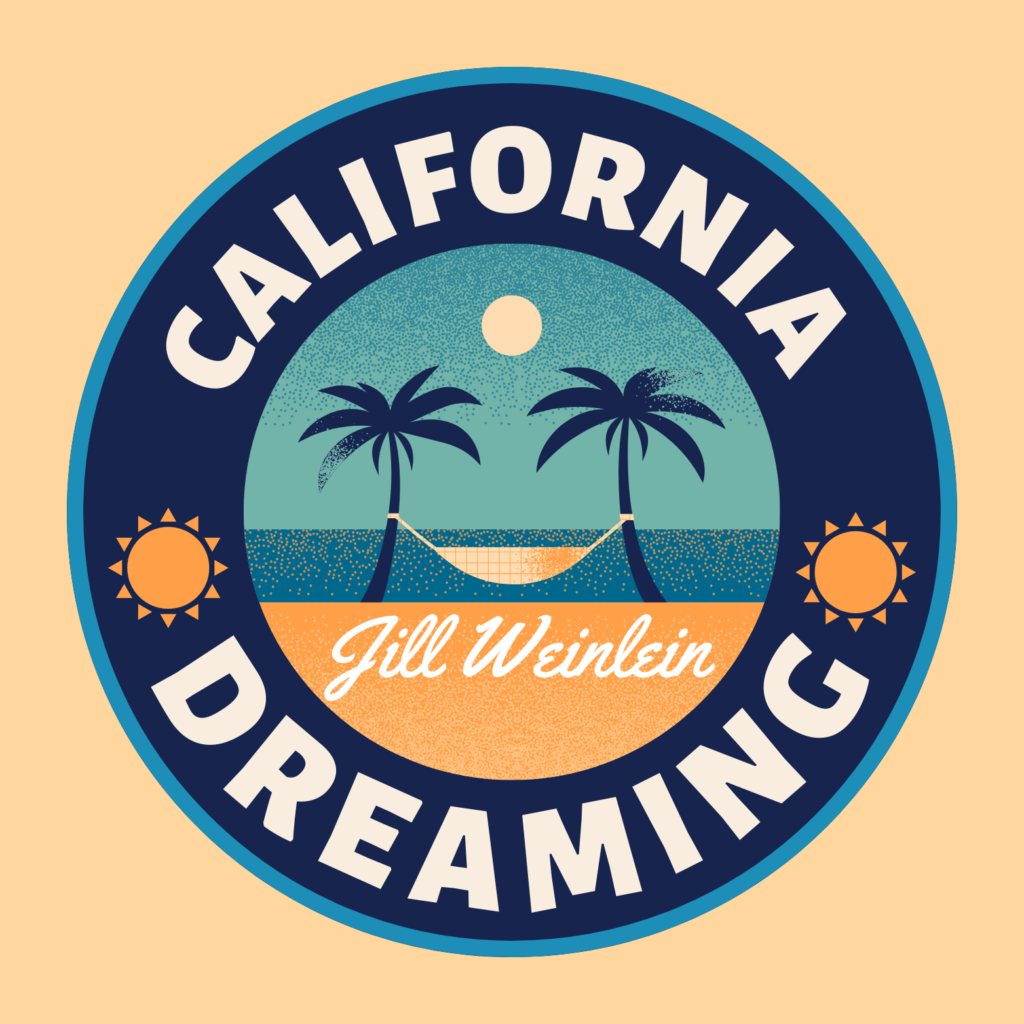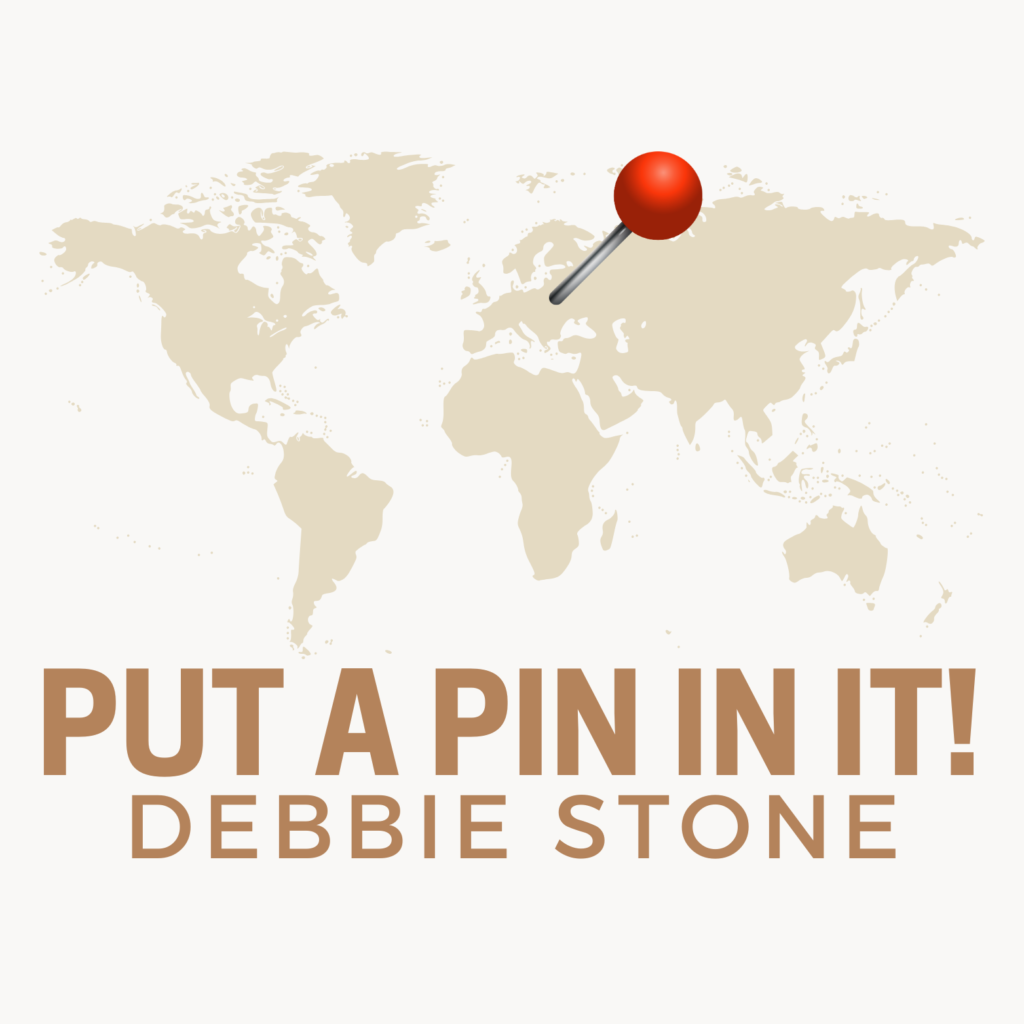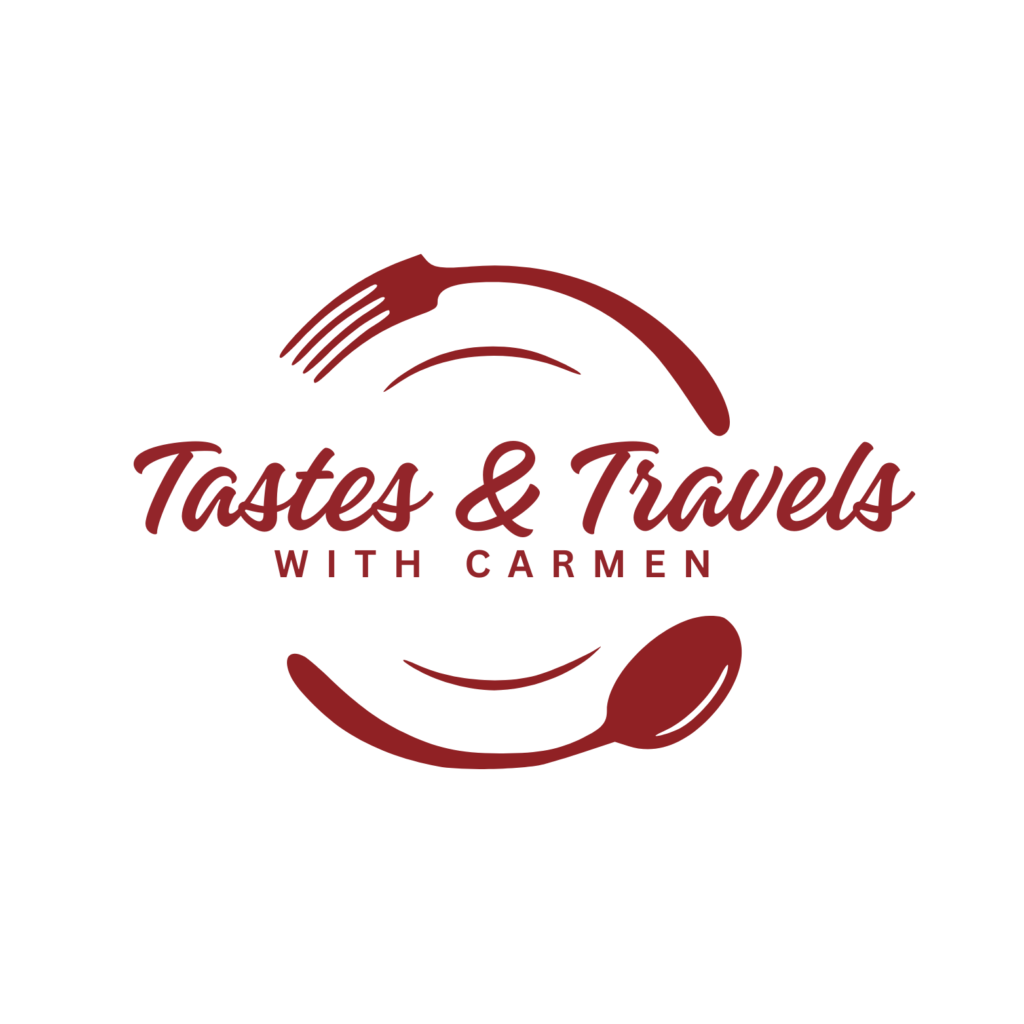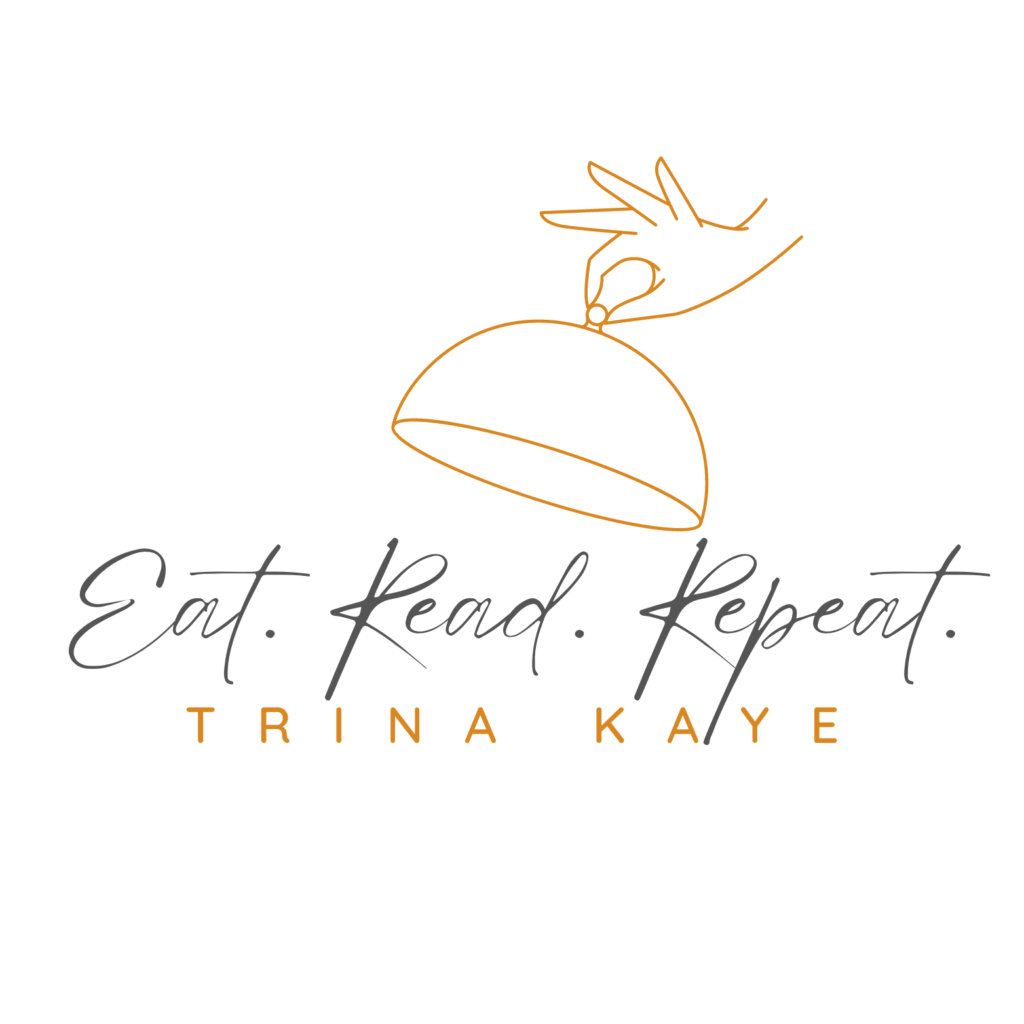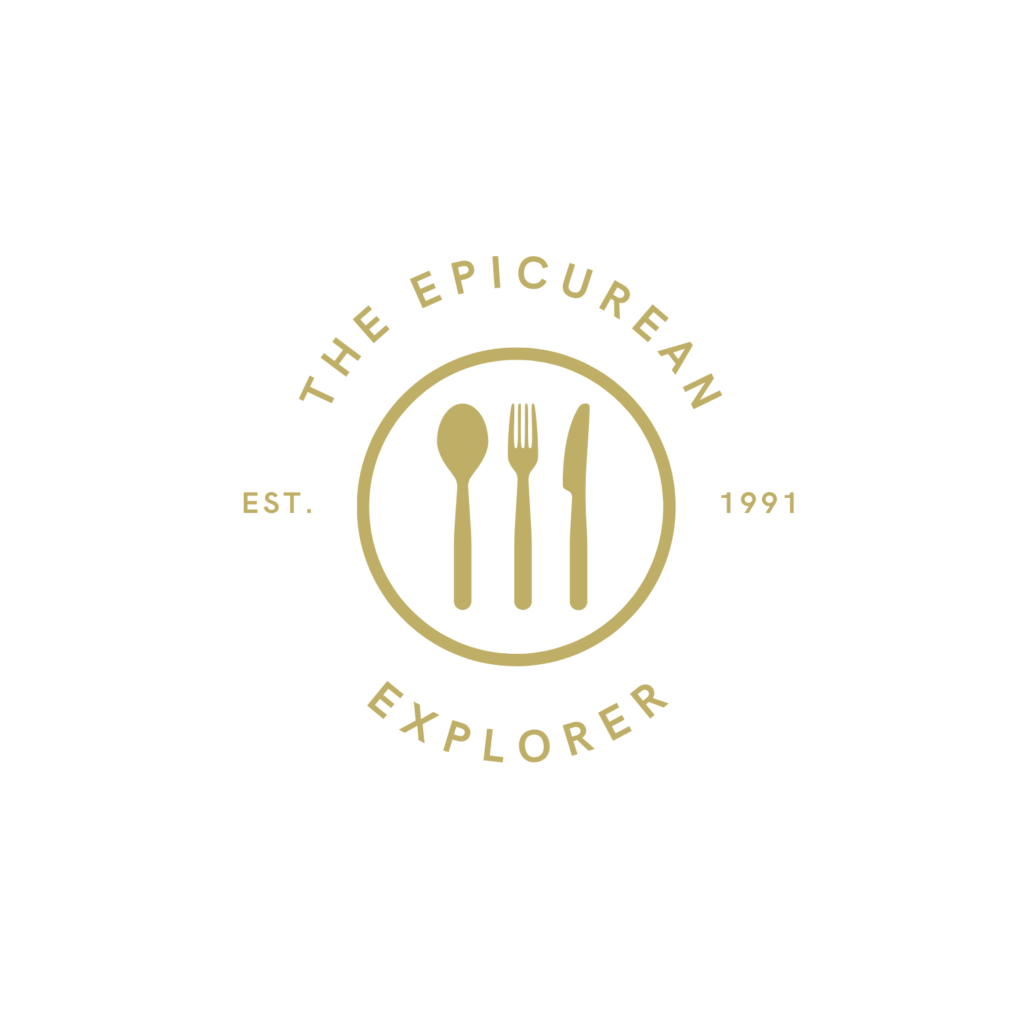
The Pairing Project: State Foods with State Wine – Part 8
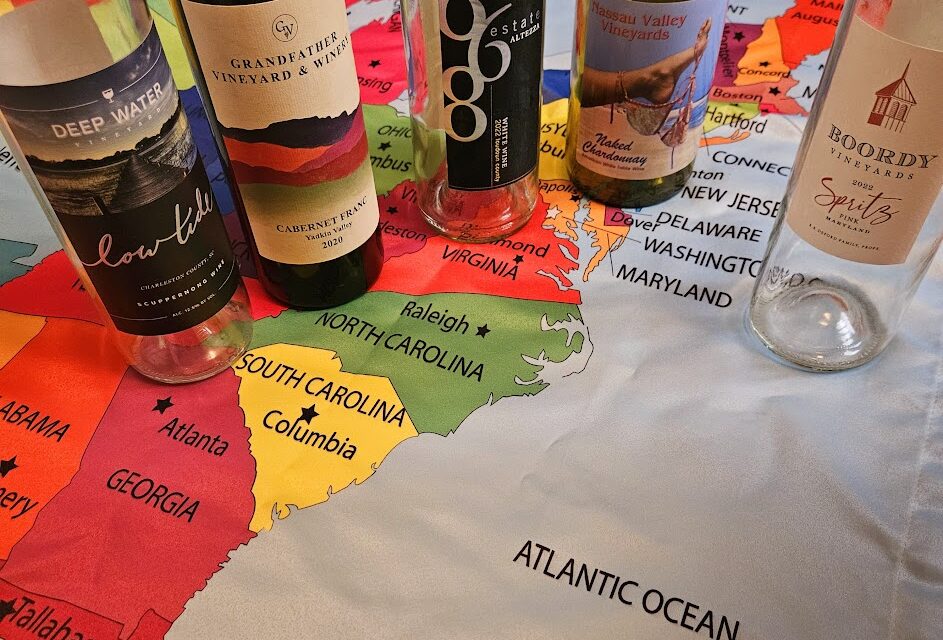
I credit the Native American people for most of Part 8 as they are largely responsible for the recipes. Their resourcefulness and ability to create flavorful dishes from land and water are commendable.
I also give kudos to the state wineries of Part 8. They were some of the sweetest people, and their willingness to participate in the project touched my heart.
South Carolina
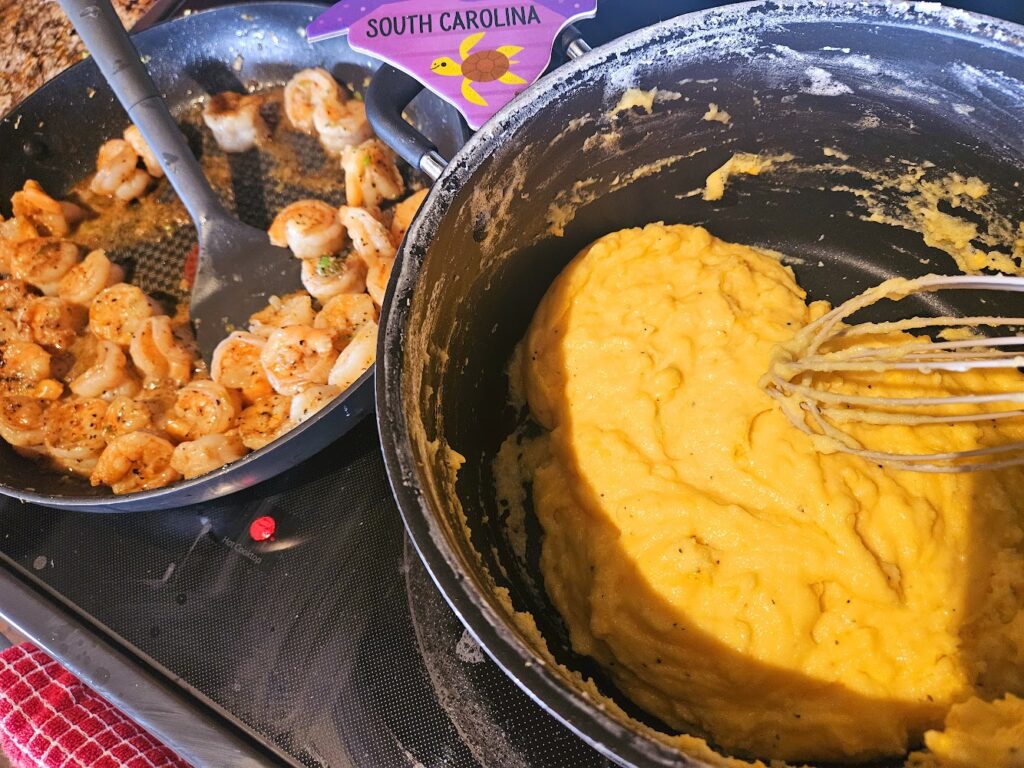
Prepping Shrimp and Grits ©Darla Hoffmann
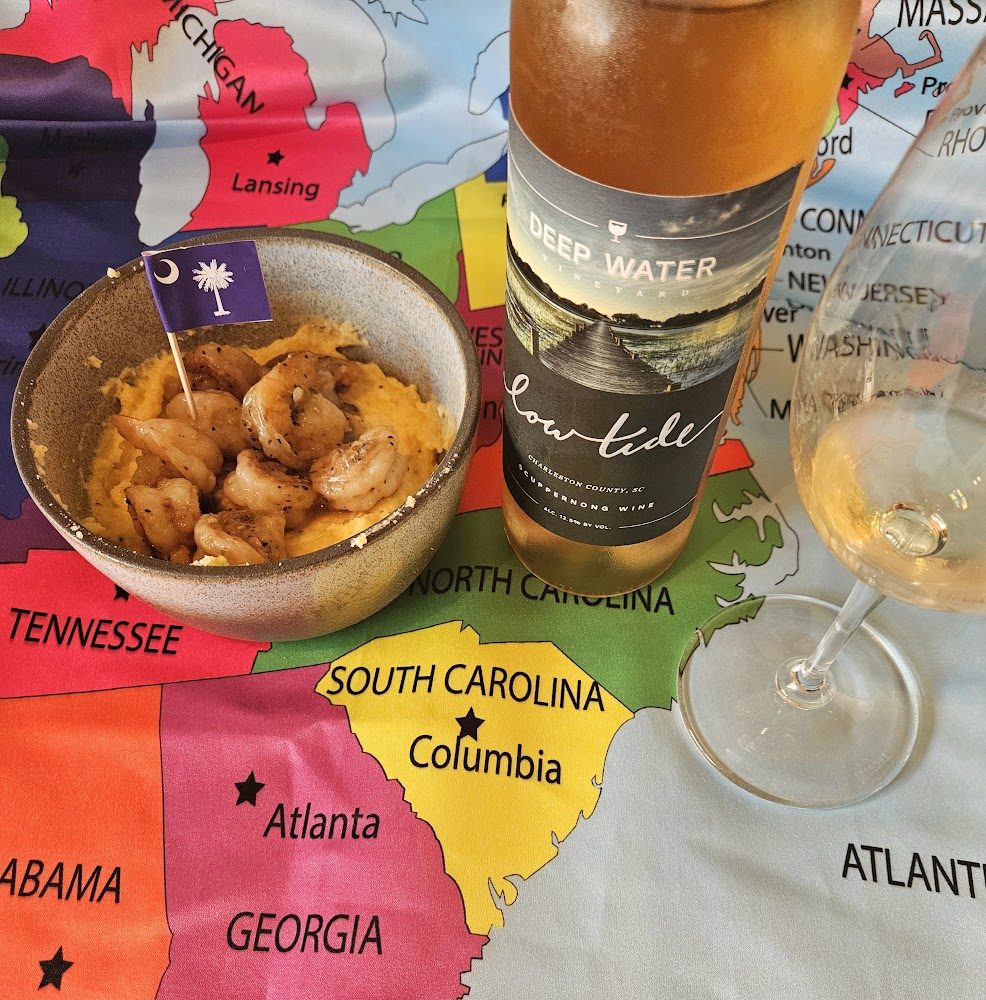
South Carolina’s Shrimp and Grits paired with Deep Waters Vineyard’s Low Tide ©Darla Hoffmann
If you research Grits, you will find its origin dates to the 1500s when Native American tribes used to grind Indian Corn to make a creamy polenta-like meal. The accessibility of products like corn and shrimp made it a go-to choice for meals.
By the 19th century, it gained significant popularity, particularly as a breakfast item, in the low-country region of South Carolina. It was commonly called ‘breakfast shrimp’ or ‘shrimp and hominy.’ The fishermen of the era favored this dish, which featured shrimp cooked in bacon grease served over creamy grits.
According to celebrated author and chef Nathalie Dupree, the first formal recipe for shrimp and grits was published in the 1930 book Two Hundred Years of Charleston Cooking.
I made the grits with corn meal, butter, water, and milk, vigorously stirring to prevent a lumpy result. Meanwhile, I sauteed the shrimp in balsamic vinegar, oil, butter, pepper, and green onions before plopping them in the grits. This was Southern cooking at its best.
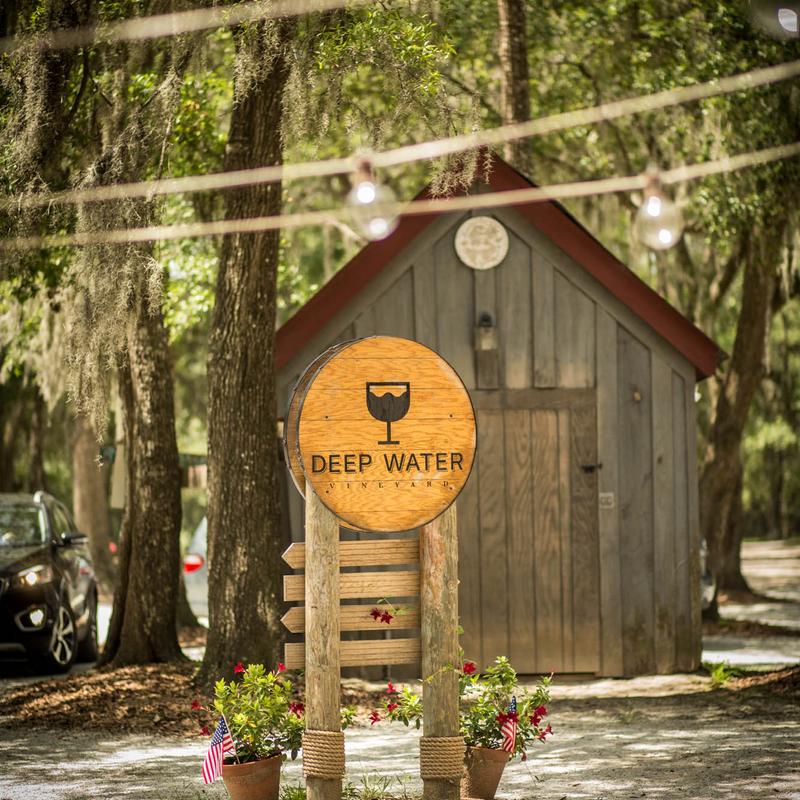
Deep Water Vinyard in South Carolina ©Deep Water Vineyard
A friend of mine happened to be vacationing in South Carolina, so I asked her to drop in Deep Waters Vineyard on Wadmalaw Island, one of the sea islands on the Atlantic Ocean, to sample a few wines for me to pair with Shrimp and Grits. Mitchell in the tasting room was so accommodating, and I was lucky to score a bottle of their orange wine called Low Tide, made from the Tara Scuppernong grape. The wine tasted much like a late-harvest Viognier, and the notes of caramel, almonds, and figs meshed beautifully with the creamy grits and buttery balsamic shrimp.
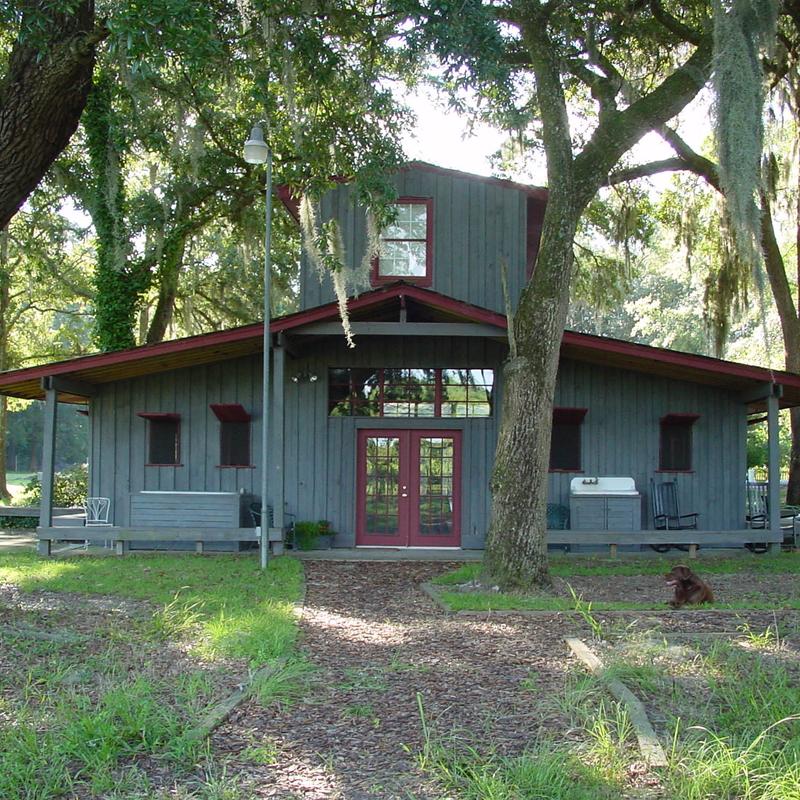
Tasting Room at Deep Water Vineyard ©Deep Water Vineyards
Deep Waters Vineyard is located on Wadmalaw’s serene and refreshingly quiet island, about 30 miles south of Charleston. Owners Jesse and Andrea Freiwald packed their belongings and beliefs in exploring deeper waters and moved south in 2012. Soon after, they purchased the former Irvin House Vineyard, making it the 48-acre winery and vineyard it is today. They produce authentic Muscadine wine and many other reds, roses, and whites. They welcome you to take in the outdoors at their tasting room — bring your dogs, children, and picnic lunch. Food trucks are often on-site on Saturdays!
North Carolina
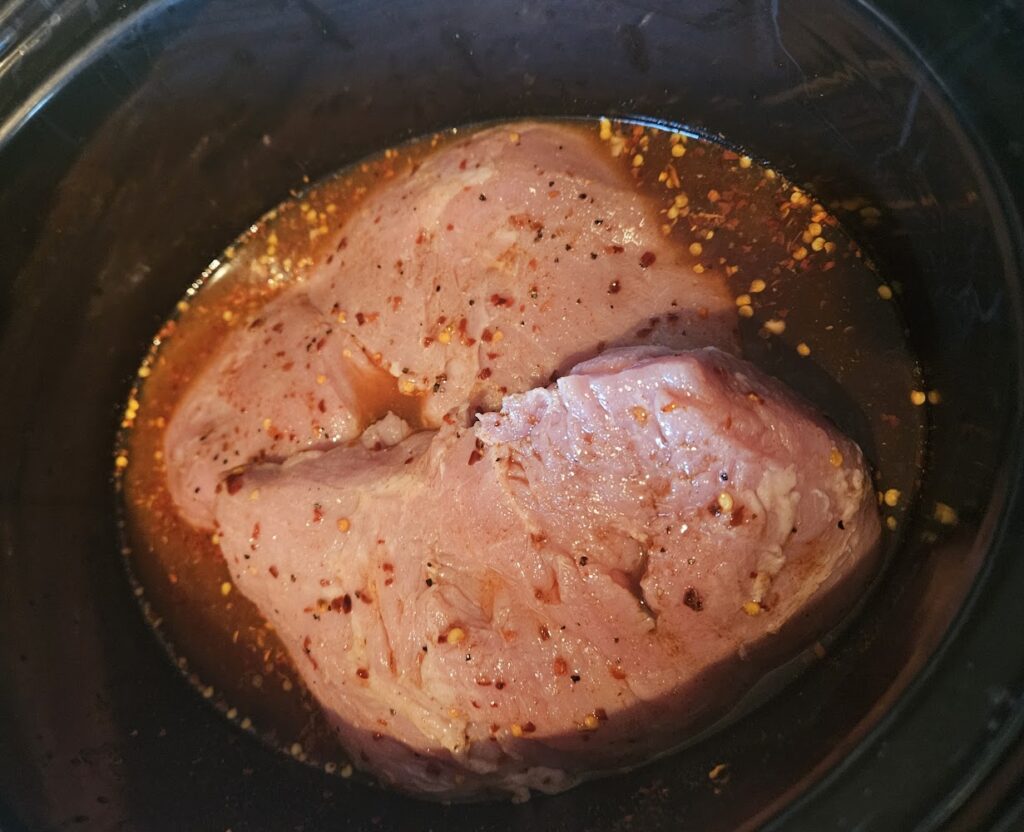
BBQ Pork Prep ©Darla Hoffmann
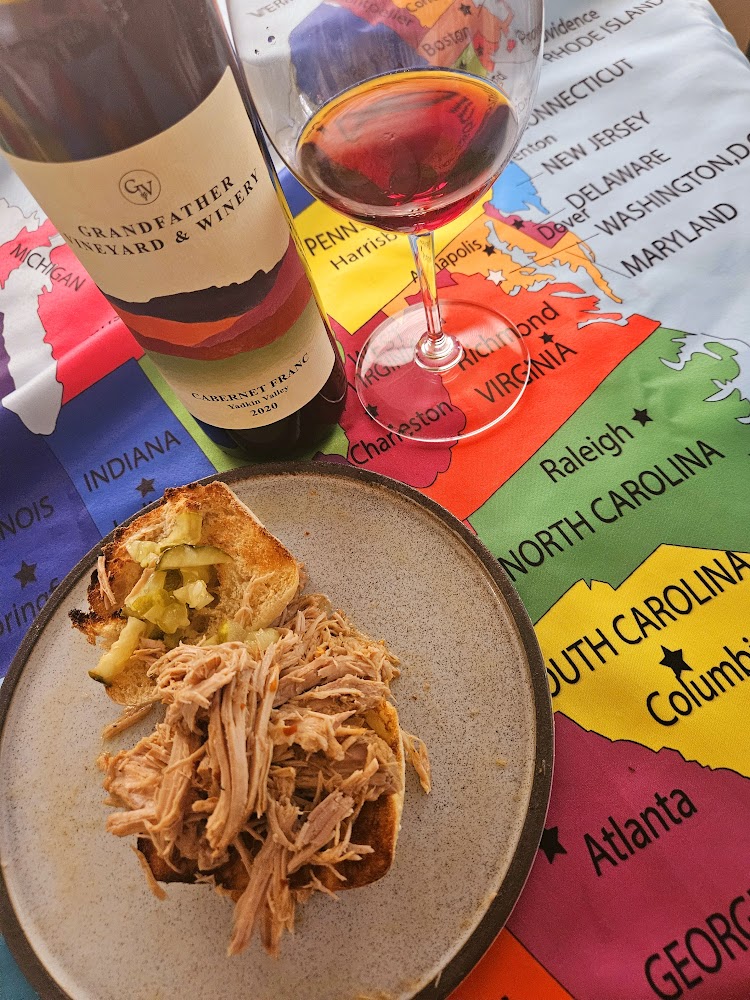
North Carolina’s BBQ Pork paired with Grandfather Vineyards and Winery’s Cab Franc ©Darla Hoffmann
Following the common theme, the beginnings date back to Native American tribes of the region, who brought their cooking traditions with them. Many folks use vinegar in their cooking to tenderize and add flavor and as a preservation method to extend the shelf life of meats. The early settlers were also resourceful, and making vinegar-based sauce allowed them to use the abundance of apple orchards in North Carolina.
North Carolina is still known for its distinct BBQ culture, with various areas of the state boasting their unique barbecue styles and accompanying sauces. In the eastern part of the state, a thin, vinegar-based sauce complements the whole hog barbecue common in that region. A tomato and vinegar-based, sweeter sauce over pork shoulder is more popular in the western part of the state. It just makes sense to pour whichever sauce you prefer over pork, as the state has a long history of producing it.
My pork butt sat in the crock pot on low for seven hours, swimming in white vinegar, apple cider vinegar, apple juice, and spices. It was a pretty painless recipe.
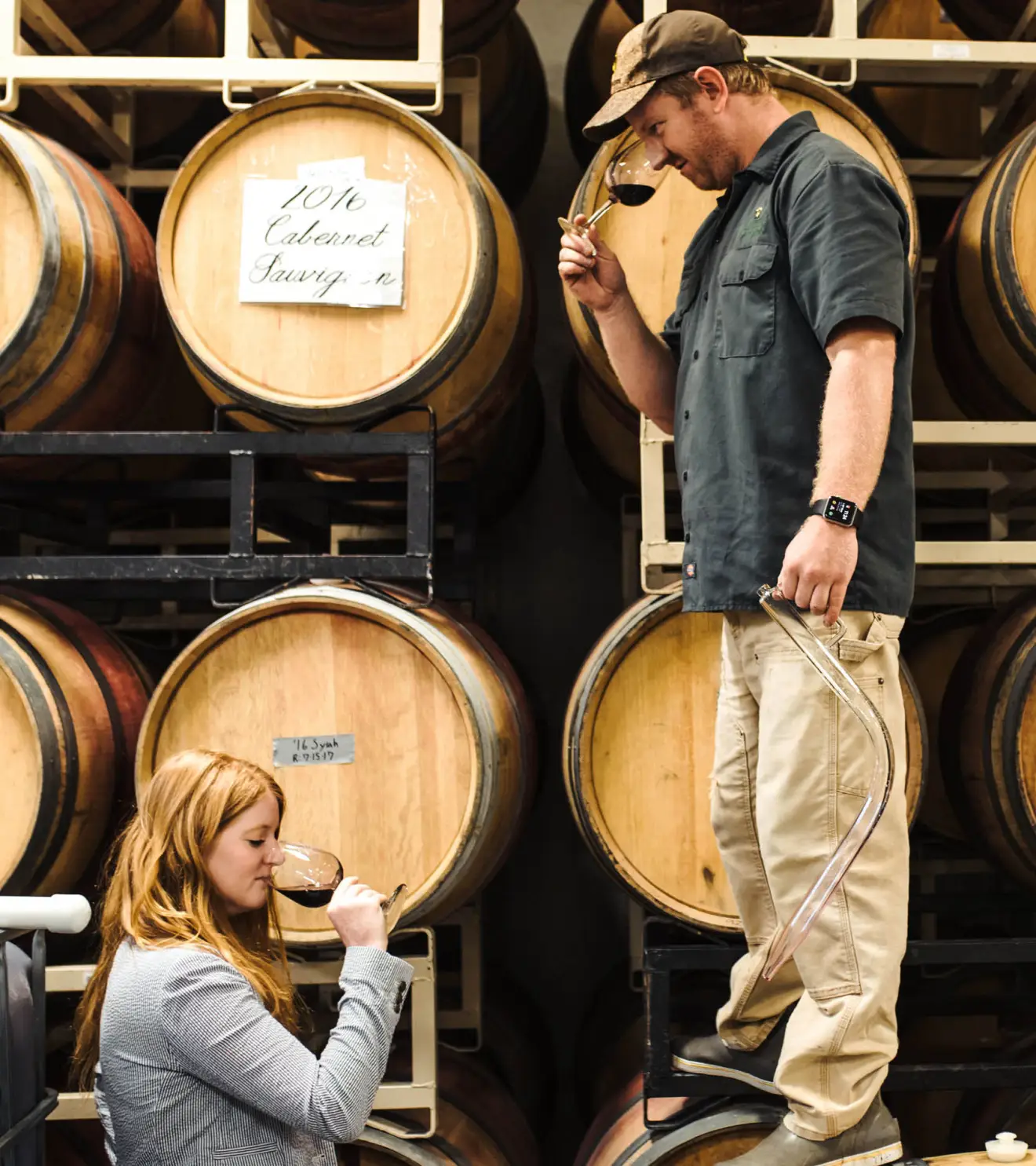
Barrel Tasting at Grandfather Vineyards ©Grandfather Vineyards
I called upon Grandfather Vineyard and Winery to pair a wine with the vinegar-based BBQ. They sent me their herbaceous Cabernet Franc, which made the pairing feel like Christmas Day. The wine’s cinnamon spice, reminiscent of the holiday season, met the apple cider in the dish and sang harmoniously with cheer to the New Year.
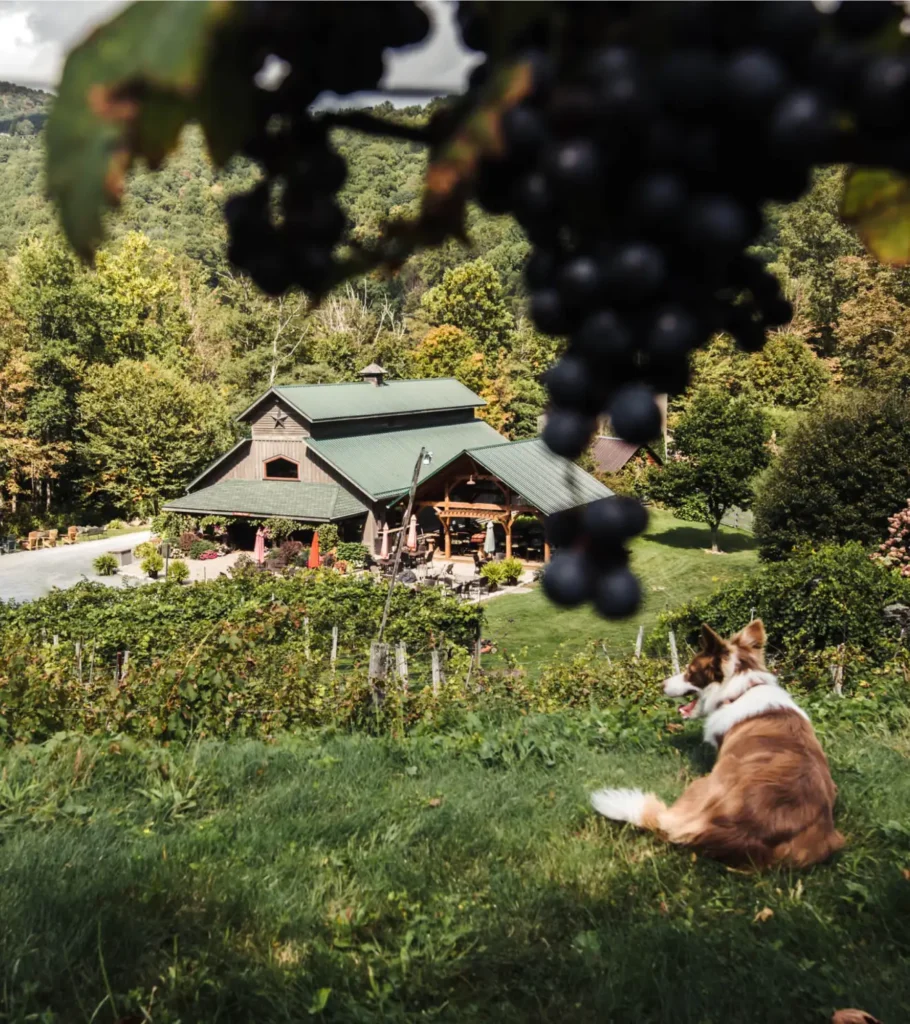
Tasting Room at Grandfather Vineyards ©Grandfather Vineyards
Steve Tatum, owner of Grandfather Vineyards, started planting vines as a hobby around 2003. By 2011, he and his family had jumped in with both feet and opened the doors to their winery. Located in Banner Elk, they encourage people to visit and taste their wines in the fresh air influenced by Grandfather Mountain and the Watauga River. The property is a beautiful spot to sit back, listen to music, and sip wine. As part of the Appalachian High Country AVA, they offer a wide selection of wines from varieties grown at lower sections on their property and from their true mountain fruit — they also source quality grapes from other regions to create great wine. *Please keep the folks at Grandfather Vineyards in your thoughts — Hurricane Helene caused them extreme damage, and it will take some time for them to rebuild.
Virginia
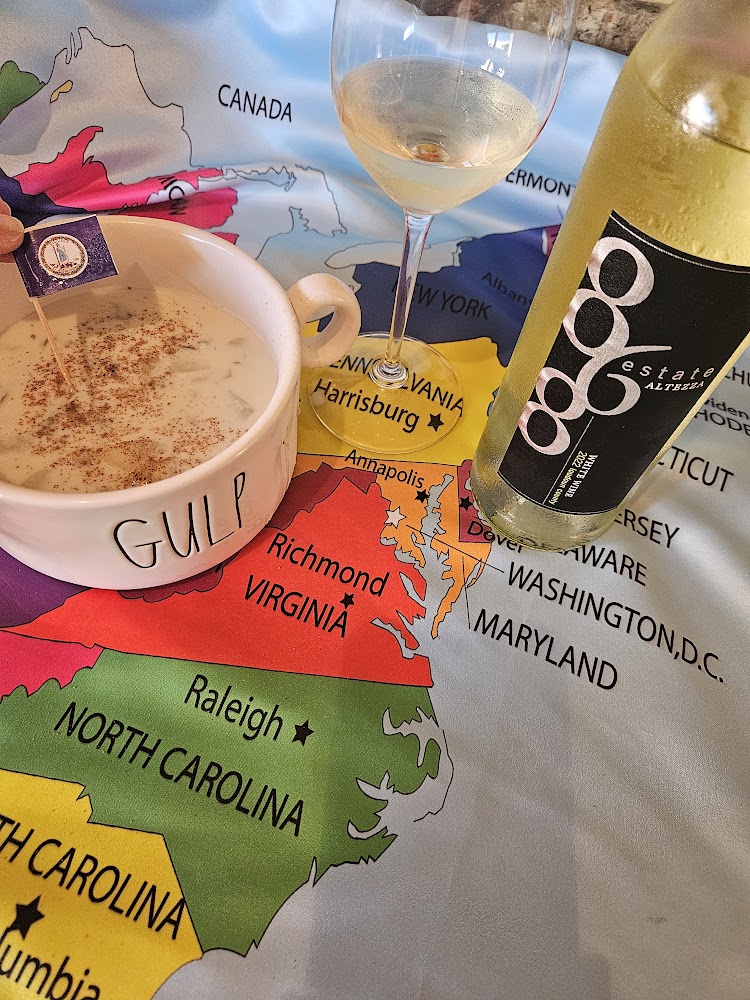
Virginia’s Oyster Stew paired with 868 Estate Vineyard’s Altezza ©Darla Hoffmann
The first oyster dates back 200 million years and ultimately became a food source for animals and humans. The incredible species filters out the water and nitrogen by ridding out pollutants and depositing them on the floors where they are not harmful. Hence, I think it’s safe to say we should be mindful of how we eat and cook oysters!
Virginia’s proximity to Chesapeake Bay plays a significant role in the popularity of oyster stew. The Bay is home to some of the finest oysters in the world, prized for their briny flavor and plump texture. Locals take pride in sourcing their oysters locally, knowing they are getting the freshest and most flavorful shellfish. Word has it that Irish settlers in the 19th century were some of the first to make oyster stew because their Catholic background didn’t allow meat on holidays.
I took the lazy way out and bought canned oysters for this recipe – it was still quite tasty, and I used the healthiest recipe I could find. I boiled water, oyster juice, and a bit of butter with the russet potatoes (peeled and cubed) before adding the oysters, milk, and white pepper, topping it with a pinch of nutmeg.
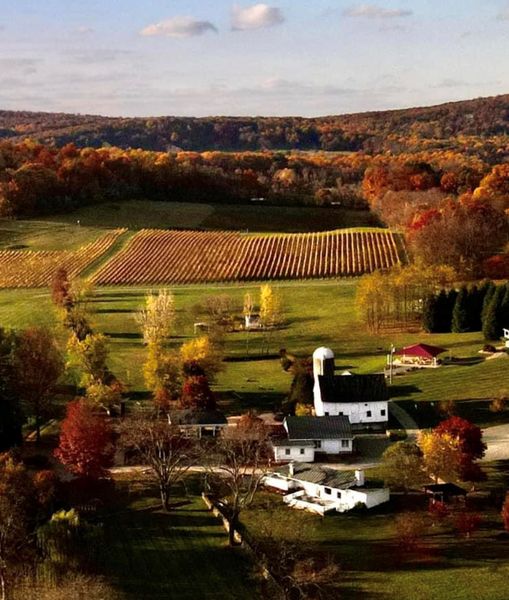
868 Estate Vineyards in Virginia ©868 Estate Vineyards
868 Estate Vineyards sent me a bottle of their white blend of Sauvignon Blanc and Viognier called Altezza (which means elevation in Italian). This wine celebrates the hilltop on the property that is 868 feet above sea level. The vibrant light wine cut the fat in the stew, and the salinity and seashell aromas were the ultimate complement to the dish.
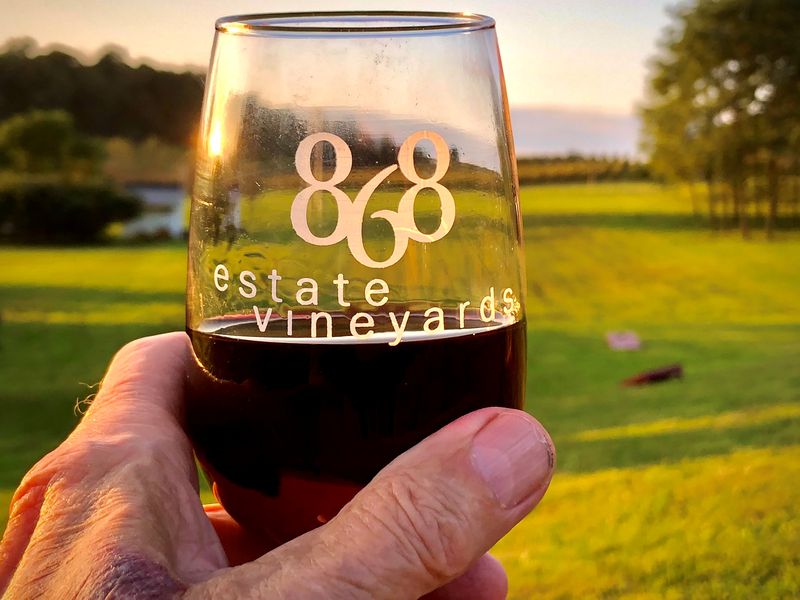
868 Estate Vineyards ©868 Estate Vineyards
868 Estate Vineyards is the brainchild of three families that came together to serve fun. Peter and Nancy Deliso, Wendy and Chris Charron, Carl and Erin DiManno bought Grandale Farm in 2012 to celebrate their award-winning wines, ‘good eats’ like tacos and burgers, and local artists. The owners are full of life and wish to share their lush green property to drink wine, kick back, and relax. So, bring your blankets or camping chairs and prepare for a good time. On Black Friday each year, they invite people to walk up the hill to enjoy the view across all the 868 Estate vines, laid out like a carpet below, nestled between the Blue Ridge and Short Hill Mountain ranges.
Maryland
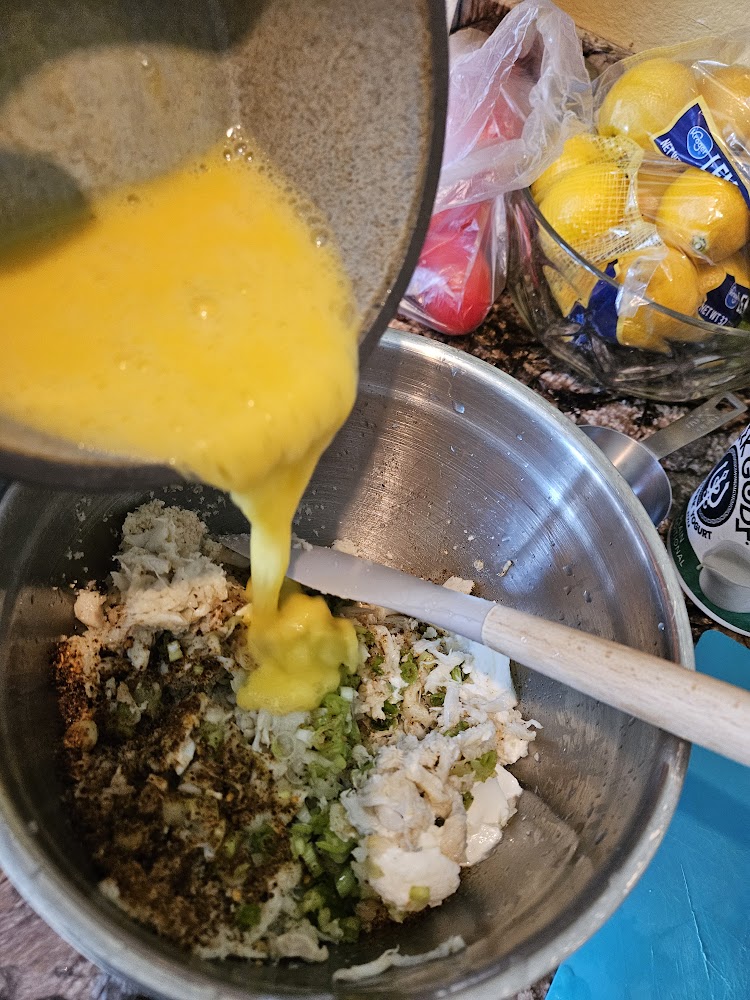
Prepping the Crab Cakes ©Darla Hoffmann
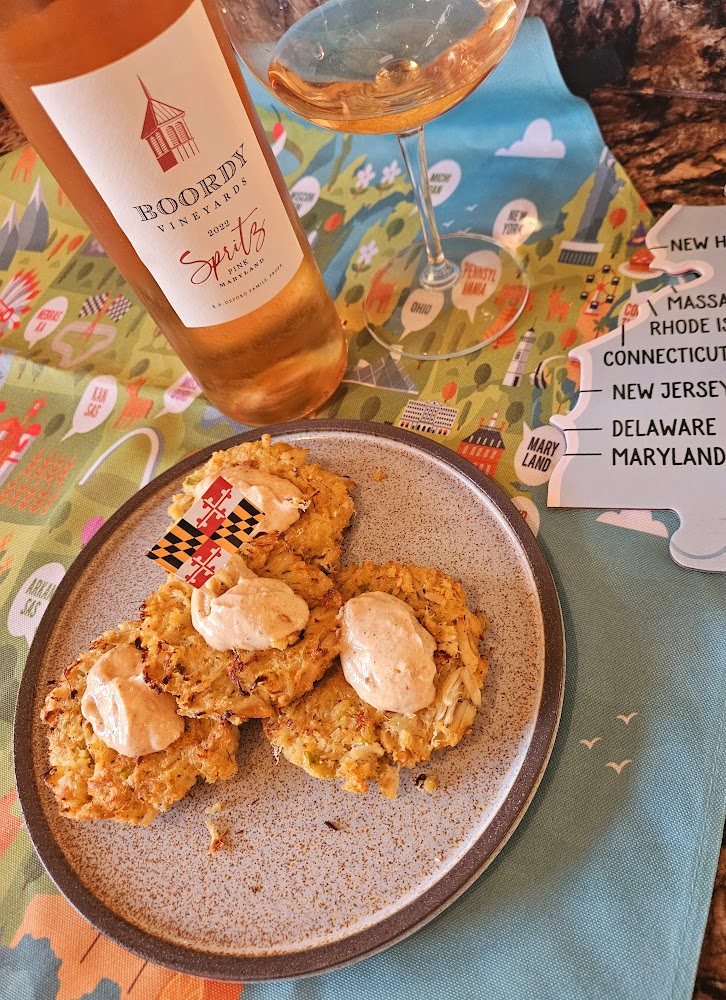
Maryland Crab Cakes paired with Boordy Vineyard’s Pink Spritz ©Darla Hoffmann
Again, to credit the Native Americans, research points to tribes living along the Chesapeake Bay as some of the first to make crab cakes because of the abundance of crabs in the waters. They were resourceful and figured out that mixing it with cornmeal and frying it in bear fat would be a tasty treat. Nowadays, this culinary delight exists on the menus of expensive restaurants all over the world. But it is Maryland that is most proud of the creation. Recipes in the state ensure the crab meat is the star of the dish — they prefer to limit added ingredients that would mask the flavor of the shellfish.
This recipe was more complicated than I had anticipated. I combined fresh lump crab meat with eggs, Dijon, Greek yogurt, panko, paprika, and other spices and formed the mixture into about 12 patties. I baked them for about 13 minutes a side, broiling them at the end for a crispier finish. They came out nice, but I need some practice to perfect this recipe.
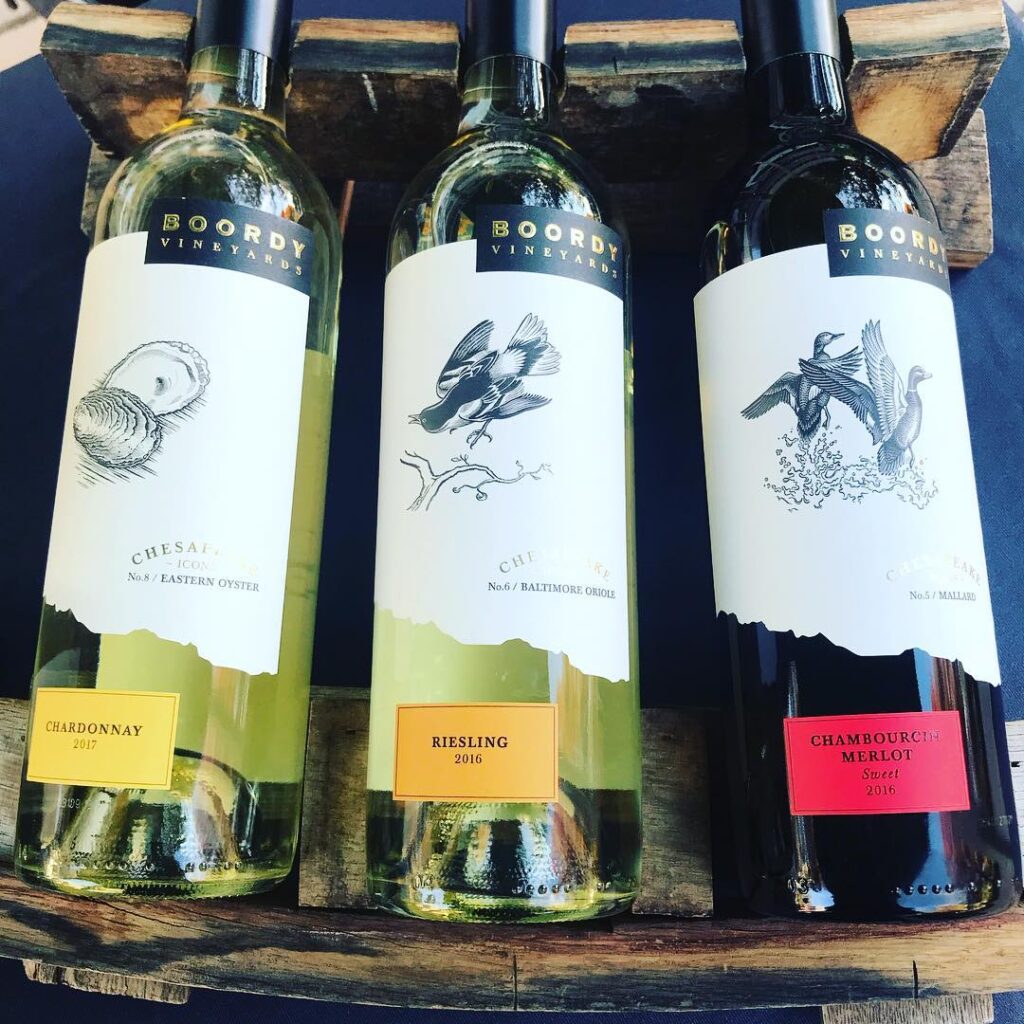
Bottle Shot at Boordy Vineyards in Maryland ©Boordy Vineyards
Boordy Vineyards came to my rescue with their Pink Spritz, a blend of Chambourcin and Seyval Blanc grapes. The light, crisp Rose and its subtle fizz calmed the spice and balanced the texture of the cakes. The wine had sensational strawberry sherbet flavors, and the touch of salinity and crushed rock notes matched the tanginess of the delight from the sea.
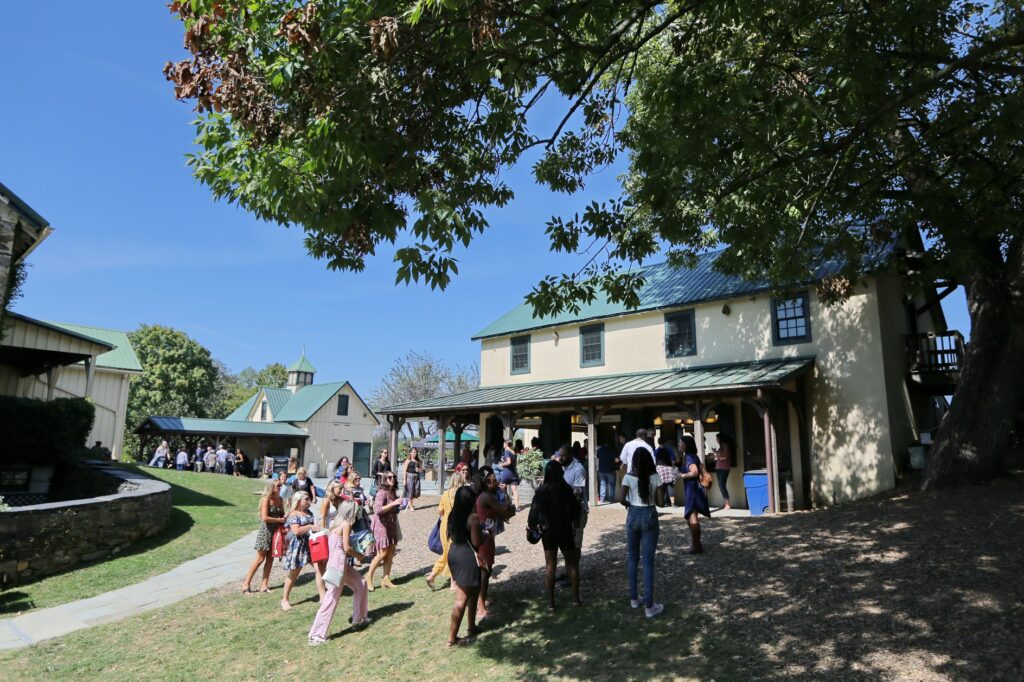
Boordy Vineyards in Maryland ©Boordy Vineyards
Boordy Vineyards‘ story began in 1725 when the owner’s ancestors settled on Long Green Valley to farm and give purpose to the land. The Deford family were grape growers to the original owners of Boordy Vineyards. In 1980, they took ownership and moved the winery to Long Green, where they dedicate their souls to working the vineyard and renovating the site.
Their Landmark wines are made from 100% Maryland fruit from their estate vineyards, which will likely take you back in time. The family loves it when visitors enjoy the rural experience with a beloved historical background.
Delaware
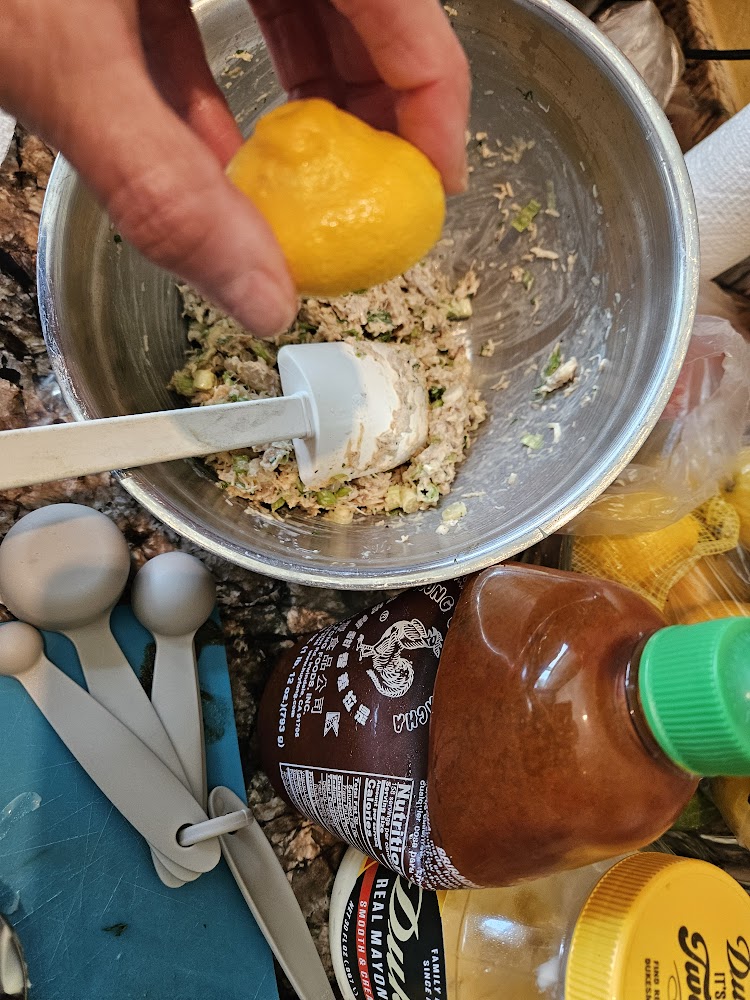
Blue Claw Crab Dip Prep ©Darla Hoffmann
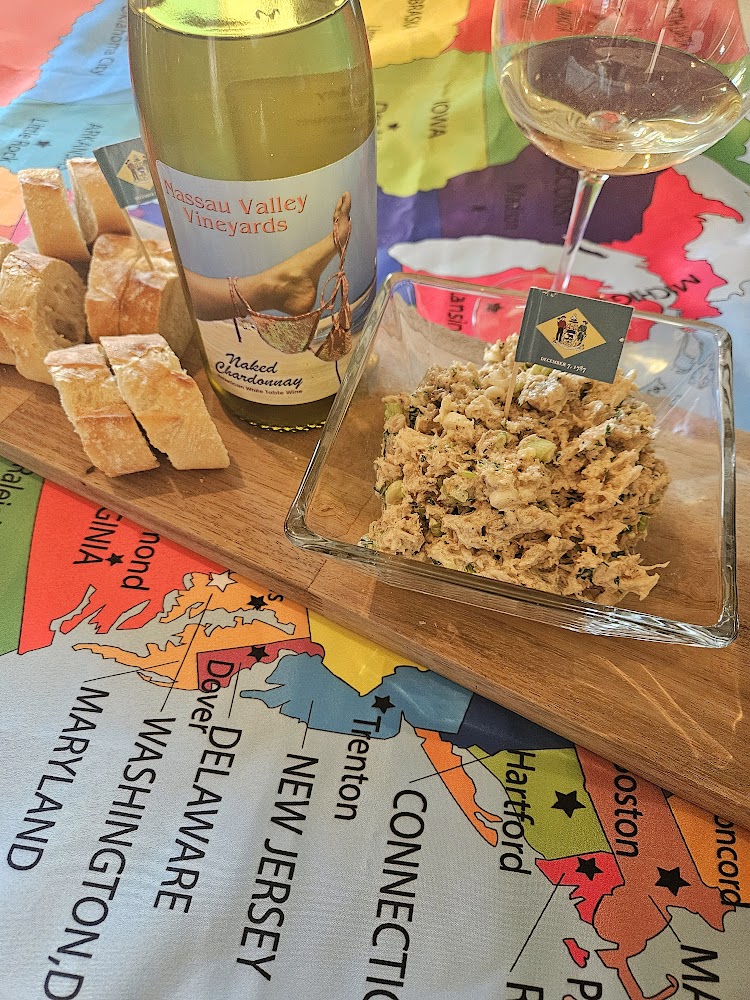
Delaware’s Blue Claw Crab Dip paired with Nassau Valley Vineyard’s Chardonnay ©Darla Hoffmann
You might be surprised to learn that Native Americans were among the first to consume blue claw crabs as a food source — that life along the Chesapeake Bay again! Fishermen of later eras became annoyed with the shellfish clogging up their nets, preventing them from capturing larger fish. However, it wasn’t long before they realized its delicious and nutritious potential.
Blue Claw crabs are abundant in the Atlantic and Delaware Bay; Delaware is renowned for having some of the best in the country.
I searched for blue claw crab and eventually found it at Whole Foods. I mixed it with mayonnaise, mustard, sriracha, and spices and served it as a dip with a baguette and salty crackers.
Nassau Valley Vineyards, an award-winning winery in Delaware, the second-smallest state, sent me their Chardonnay, aged in French Oak, for the occasion. The wine had just the right amount of minerality, rounded out with hints of hazelnuts, to share an evening with my sassy dish.
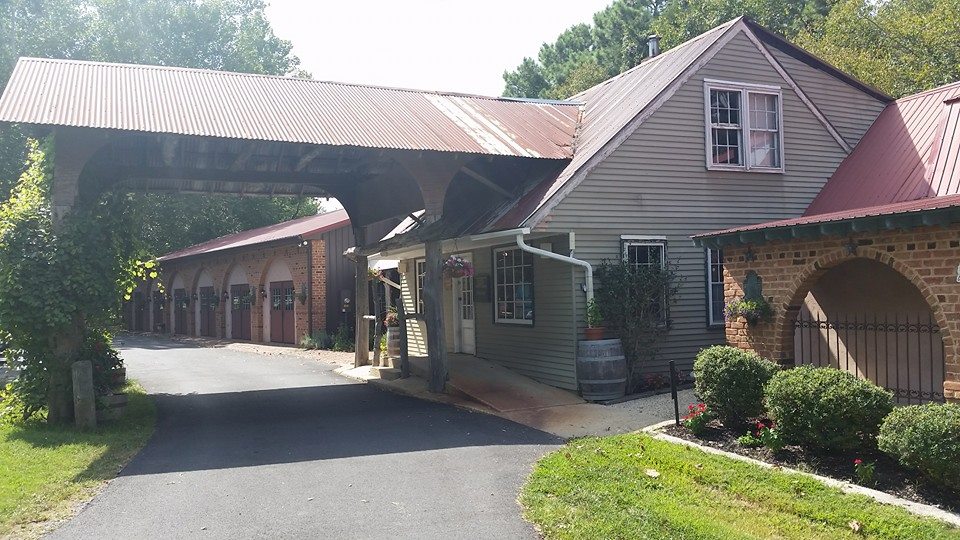
Tasting Room at Nassau Valley Vineyards ©Nassau Valley Vineyards
Peggy Raley and her father, Bob Raley, founded the site of Nassau Valley Vineyards in 1987. Peggy worked in the wine industry, writing for editorial publications for several years. When she was ready to make her wine, she faced legislative challenges. With farming restrictions against vineyards in the state, Peggy was instrumental in passing laws to permit farm wineries. Nassau Valley Vineyards was born because of her determination; in 1993, they opened for business.
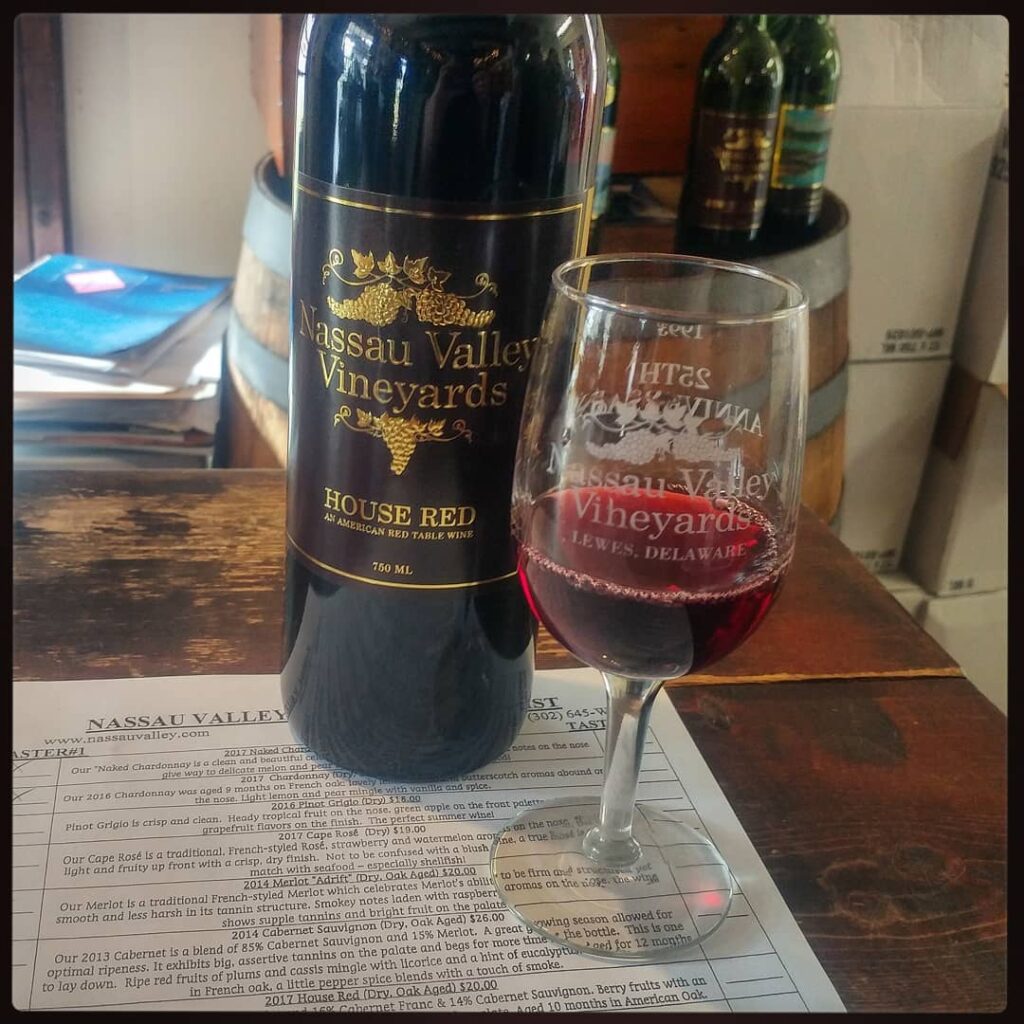
Bottle Shot at Nassau Valley Vineyards ©Nassau Valley Vineyards
Raley also sources regionally grown fruit to make its wine and is proud of its various labels. A visit is a unique experience, with specialty tastings, educational seminars, and tours. However, guests are taken on a first-come-first-serve basis. Call ahead to get the scoop on what to expect that day.
I had a great time with these fabulous state wineries and can’t believe how far this project has come. As I head up the East Coast, I bid a farewell and thank you for your kindness. 40 states down—10 to go!












